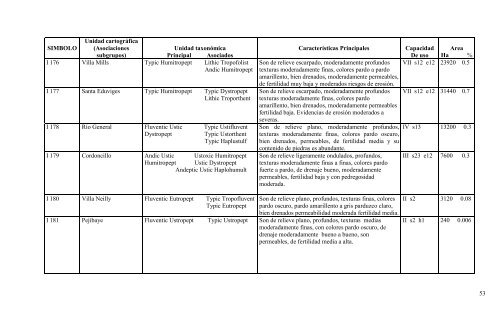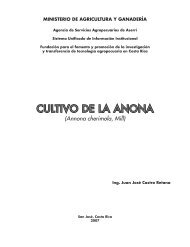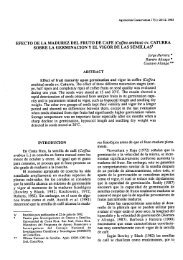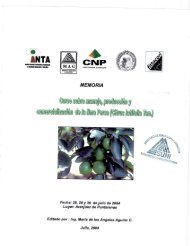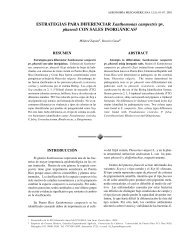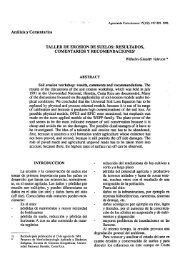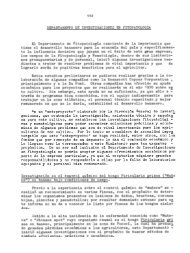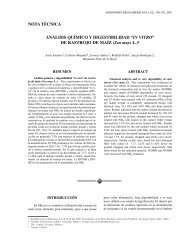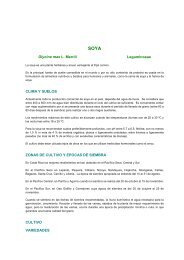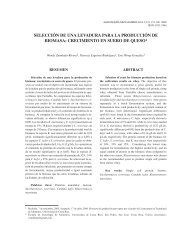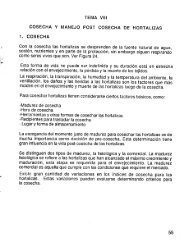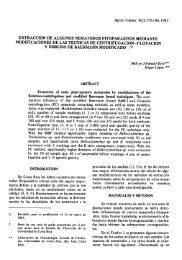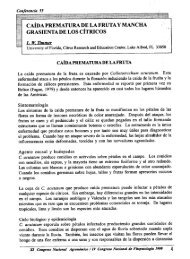Manual descriptivo de la leyenda del mapa de capacidad de uso de ...
Manual descriptivo de la leyenda del mapa de capacidad de uso de ...
Manual descriptivo de la leyenda del mapa de capacidad de uso de ...
Create successful ePaper yourself
Turn your PDF publications into a flip-book with our unique Google optimized e-Paper software.
SIMBOLO<br />
Unidad cartográfica<br />
(Asociaciones<br />
subgrupos)<br />
Unidad taxonómica<br />
Principal Asociados<br />
I 176 Vil<strong>la</strong> Mills Typic Humitropept Lithic Tropofolist<br />
Andic Humitropept<br />
I 177 Santa Eduviges Typic Humitropept Typic Dystropept<br />
Lithic Troporthent<br />
I 178 Río General Fluventic Ustic Typic Ustifluvent<br />
Dystropept Typic Ustorthent<br />
Typic Haplustulf<br />
I 179 Cordoncillo Andic Ustic Ustoxic Humitropept<br />
Humitropept Ustic Dystropept<br />
An<strong>de</strong>ptic Ustic Haplohumult<br />
Características Principales<br />
Son <strong>de</strong> relieve escarpado, mo<strong>de</strong>radamente profundos<br />
texturas mo<strong>de</strong>radamente finas, colores pardo a pardo<br />
amarillento, bien drenados, mo<strong>de</strong>radamente permeables,<br />
<strong>de</strong> fertilidad muy baja y mo<strong>de</strong>rados riesgos <strong>de</strong> erosión.<br />
Son <strong>de</strong> relieve escarpado, mo<strong>de</strong>radamente profundos<br />
texturas mo<strong>de</strong>radamente finas, colores pardo<br />
amarillento, bien drenados, mo<strong>de</strong>radamente permeables<br />
fertilidad baja. Evi<strong>de</strong>ncias <strong>de</strong> erosión mo<strong>de</strong>rados a<br />
severas.<br />
Son <strong>de</strong> relieve p<strong>la</strong>no, mo<strong>de</strong>radamente profundos,<br />
texturas mo<strong>de</strong>radamente finas, colores pardo oscuro,<br />
bien drenados, permeables, <strong>de</strong> fertilidad media y su<br />
contenido <strong>de</strong> piedras es abundante.<br />
Son <strong>de</strong> relieve ligeramente ondu<strong>la</strong>dos, profundos,<br />
texturas mo<strong>de</strong>radamente finas a finas, colores pardo<br />
fuerte a pardo, <strong>de</strong> drenaje bueno, mo<strong>de</strong>radamente<br />
permeables, fertilidad baja y con pedregosidad<br />
mo<strong>de</strong>rada.<br />
Capacidad Area<br />
De <strong>uso</strong> Ha %<br />
VII s12 e12 23920 0.5<br />
VII s12 e12 31440 0.7<br />
IV s13 13200 0.3<br />
III s23 e12 7600 0.3<br />
I 180 Vil<strong>la</strong> Neilly Fluventic Eutropept Typic Tropofluvent<br />
Typic Eutropept<br />
Son <strong>de</strong> relieve p<strong>la</strong>no, profundos, texturas finas, colores<br />
pardo oscuro, pardo amarillento a gris parduzco c<strong>la</strong>ro,<br />
bien drenados permeabilidad mo<strong>de</strong>rada fertilidad media.<br />
I 181 Pejibaye Fluventic Ustropept Typic Ustropept Son <strong>de</strong> relieve p<strong>la</strong>no, profundos, texturas medias<br />
mo<strong>de</strong>radamente finas, con colores pardo oscuro, <strong>de</strong><br />
drenaje mo<strong>de</strong>radamente bueno a bueno, son<br />
permeables, <strong>de</strong> fertilidad media a alta.<br />
II s2 3120 0.08<br />
II s2 h1 240 0.006<br />
53


